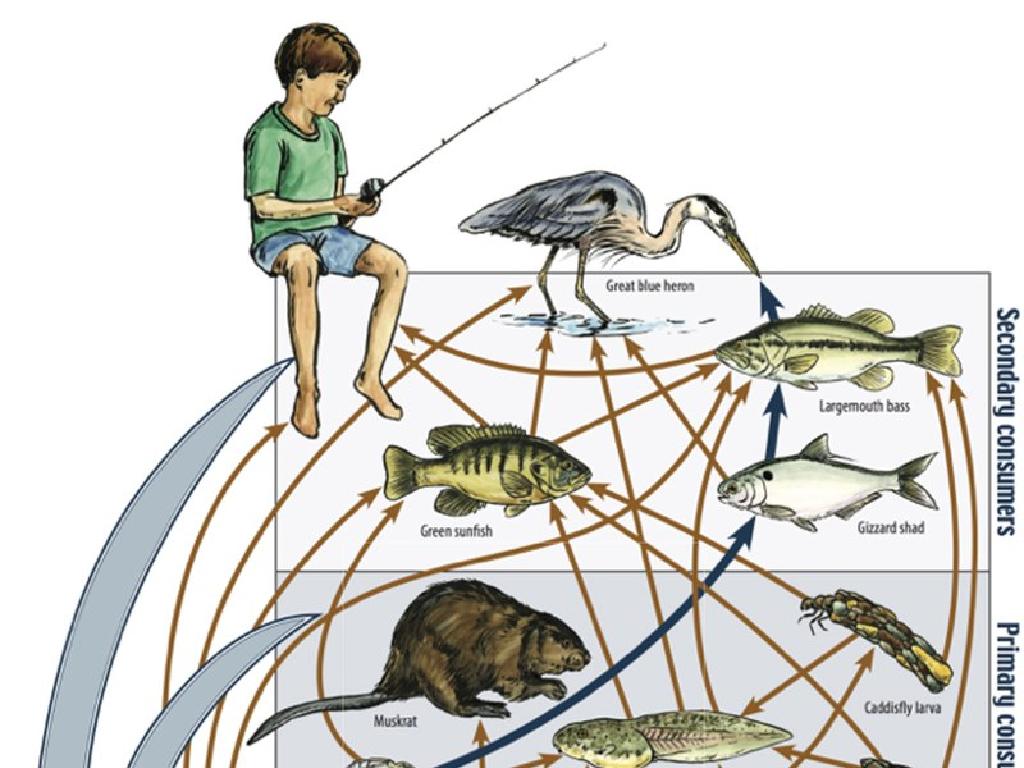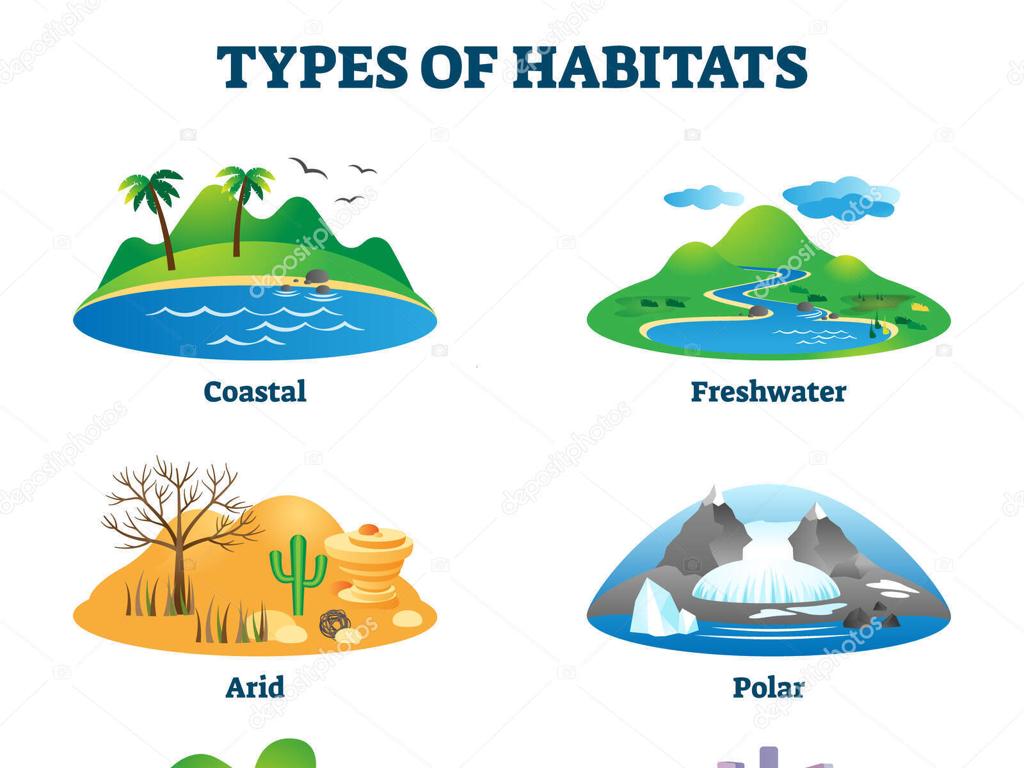Animal Adaptations: Skins And Body Coverings
Subject: Science
Grade: Fifth grade
Topic: Adaptations
Please LOG IN to download the presentation. Access is available to registered users only.
View More Content
Animal Adaptations: Skins and Body Coverings
– What are animal adaptations?
– Adaptations are traits helping survival
– Animals’ survival strategies
– Camouflage, temperature control, etc.
– Today’s focus: Skins and Coverings
– Scales, fur, feathers protect and aid animals
– Exploring functions and types
– Functions: protection, camouflage, temperature regulation
|
This slide introduces the concept of animal adaptations, specifically focusing on skins and body coverings. Adaptations are special features that allow animals to survive in their environments. These can include various strategies for camouflage, temperature control, and protection from predators. Today’s lesson will delve into the different types of skins and body coverings such as scales, fur, and feathers, and discuss how they help animals adapt to their habitats. Encourage students to think about how different coverings work for different animals and the importance of these adaptations in the survival of species.
Understanding Animal Adaptations
– Define biological adaptation
– Adaptation: a trait that helps an organism survive and reproduce
– Examples of animal adaptations
– Camouflage in chameleons, thick fur in polar bears
– Adaptations’ role in survival
– Traits that improve survival in specific environments
– Discuss adaptation significance
|
Begin the lesson by defining adaptation in the context of biology, emphasizing that it’s a characteristic that enhances the survival and reproductive success of an organism. Provide vivid examples of adaptations such as the camouflage abilities of a chameleon or the thick fur of polar bears to illustrate the concept. Explain how these adaptations are crucial for an animal’s survival, as they help it to better fit into its environment, avoid predators, or find food. Engage the students by asking them to think of other animals and the unique adaptations they might have. This will help them understand the importance of adaptations in the natural world.
Animal Adaptations: Skins and Body Coverings
– Behavioral vs. Physical Adaptations
– Behavioral adaptations are actions animals take to survive, while physical adaptations are body features that help them survive.
– Skins as Physical Adaptations
– Animal skins vary from thick hides to spiky scales, aiding in defense, temperature regulation, and more.
– Adaptations for Protection
– Thick fur, hard shells, and quills are physical adaptations that protect animals from predators and harsh environments.
– Camouflage and Survival
– Camouflage allows animals to blend with their surroundings, making it hard for predators to spot them.
|
This slide introduces students to the concept of adaptations, focusing on the differences between behavioral and physical adaptations. Emphasize that physical adaptations are structural features of an organism’s body that enhance its survival and reproduction in its environment. Discuss how skins and body coverings serve as physical adaptations, providing examples such as the tough skin of a rhinoceros, the scales of a fish, or the feathers of a bird. Explain that these adaptations can serve multiple purposes, including protection from predators and extreme weather. Highlight camouflage as a key survival strategy, using examples like the chameleon or the arctic fox. Encourage students to think of other animals with unique skins or coverings and how these might help them survive in their habitats.
Animal Adaptations: Skins as Defense
– Diversity of animal skins
– Animals have various skin types like fur, scales, or thick hides.
– Skin’s role in survival
– Skin protects from predators, weather, and can aid in camouflage.
– Elephant’s thick skin
– Elephants have thick skin to protect from sunburn and insect bites.
– Fish scales
– Fish scales reduce water drag and protect from predators and parasites.
|
This slide introduces students to the concept of animal skins as a form of adaptation for survival. Different animals have developed various types of skins, each serving a unique purpose in aiding their survival. For instance, an elephant’s thick skin provides protection against environmental factors and pests, while the scales of a fish are designed to streamline movement and offer defense. Encourage students to think about how these adaptations help the animals in their habitats and to consider other animals with unique skin adaptations. Discuss the importance of skin as the first line of defense and how it contributes to the animal’s overall well-being.
Fur and Feathers: Amazing Animal Adaptations
– Purpose of fur and feathers
– They protect animals and have special roles.
– Roles: Insulation, camouflage, sensory
– Keep warm, hide, or feel the environment.
– Example: Polar bear fur
– Thick fur keeps polar bears warm in cold.
– Example: Peacock feathers
– Bright feathers help peacocks attract mates.
|
This slide introduces students to the functions of fur and feathers in animal adaptations. Fur and feathers serve multiple purposes, including insulation to maintain body temperature, camouflage to help animals blend into their surroundings, and sensory functions to interact with the environment. For example, the thick fur of a polar bear provides insulation against the cold, while the colorful feathers of a peacock play a role in courtship displays. Encourage students to think of other animals with fur or feathers and discuss how these adaptations help them survive in their habitats.
Scales, Shells, and Exoskeletons
– Protection by scales, shells, exoskeletons
– Scales overlap to shield; shells are hard casings; exoskeletons are tough outer layers.
– Comparing animal coverings
– Scales are flat, hard plates; shells are one-piece; exoskeletons are jointed for movement.
– Turtle shells guard against predators
– Turtles retract into their shells for safety.
– Snake scales aid in slithering
– Scales reduce friction, allowing snakes to move smoothly.
|
This slide introduces students to the concept of animal adaptations, specifically how different types of body coverings provide protection and aid in survival. Scales, shells, and exoskeletons serve as a defense mechanism against predators and environmental challenges. Highlight the differences between these coverings, such as their structure and function. Use the examples of a turtle’s shell, which acts as a shield, and snake scales, which facilitate movement, to illustrate these points. Encourage students to think of other animals with these adaptations and how they contribute to their survival. This will help students understand the diversity of adaptations in the animal kingdom.
Mimicry and Camouflage in Animals
– Animals blend in using skins
– Mimicry: Copying looks to survive
– Some animals evolve to resemble others for protection
– Stick insect: A master of disguise
– Resembles twigs and branches to hide from predators
– Camouflaged moth: Invisible on bark
– Moths blend with tree bark, making them hard to spot
|
This slide introduces students to the concepts of mimicry and camouflage as survival strategies in the animal kingdom. Mimicry involves one species evolving to share common visible characteristics with another. This can protect animals from predators or help them to catch their prey. For example, the stick insect has body shapes and colors that make it look like part of the plants it lives on, providing excellent camouflage. Similarly, the camouflaged moth has patterns on its wings that closely resemble tree bark, allowing it to remain undetected by both predators and prey. Encourage students to think of other animals that use mimicry or camouflage and discuss why these adaptations are beneficial.
Adaptation in Action: Chameleon’s Camouflage
– Watch chameleon color change video
– Discuss chameleon’s survival adaptation
– Color change helps hide from predators/prey
– Q&A on the importance of adaptation
– Why do animals need to adapt? Thoughts?
– Reflect on adaptation in other animals
– Think of examples like polar bears or sharks
|
This slide aims to engage students with a visual example of adaptation by showing a video of a chameleon changing colors. After watching, lead a discussion on how this camouflage helps chameleons survive by avoiding predators and catching prey. Encourage students to ask questions and think critically about why adaptation is essential for survival in the animal kingdom. Use the Q&A to address misconceptions and to deepen understanding. Finally, prompt students to consider other animals and how their unique adaptations help them thrive in their environments. This will help students appreciate the diversity of life and the role of adaptations in evolution.
Class Activity: Create Your Own Creature
– Design an animal with unique coverings
– Consider its habitat environment
– Think about forests, deserts, oceans, etc.
– How do coverings aid survival?
– Do they camouflage? Protect from weather?
– Share your creature’s adaptations
– Explain how adaptations help in its world
|
In this activity, students will apply their knowledge of animal adaptations, specifically skins and body coverings, to create an imaginary creature. Encourage creativity while guiding them to think scientifically about the creature’s habitat and how its unique coverings help it to survive. Possible habitats to consider could be the rainforest, desert, arctic, or ocean. Discuss how different coverings serve different purposes, such as camouflage, protection from predators, or extreme weather conditions. After they design their creature, have them share with the class how these adaptations would help their creature thrive in its environment. This will help students understand the importance of adaptations in animal survival.
Conclusion: Skins and Body Coverings
– Recap: Skins and coverings importance
– Survival link to adaptations
– Coverings protect, camouflage, or regulate temperature
– Adaptations’ role in habitats
– Each habitat demands specific adaptations for survival
– Evolution and adaptation connection
– Adaptations lead to long-term species changes
|
As we conclude our lesson on animal adaptations, specifically skins and body coverings, it’s crucial to reinforce the understanding that these adaptations are essential for survival. They serve various functions such as protection from predators, camouflage, and temperature regulation. Emphasize how these adaptations are perfectly suited to an animal’s habitat, allowing them to thrive in diverse environmental conditions. Finally, remind students that these adaptations are a result of evolution, highlighting the connection between an organism’s ability to survive and its evolutionary success. Encourage students to think of examples and reflect on how these adaptations have played a role in the survival and evolution of species.





